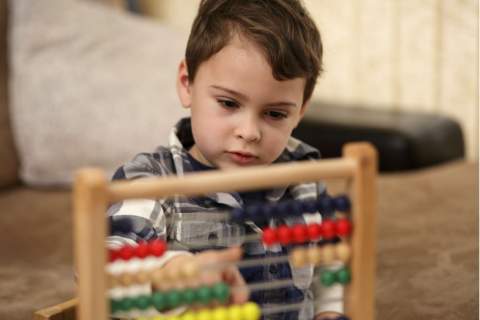Scientists have found a way to predict autism at a younger age, which will enable critical interventions to occur much earlier in a child’s life.
A year-long study at the Hospital for Sick Children in Toronto is the first to sort through variations within genes and invent a new technique for identifying which genetic variations are most likely to cause autism.
By looking at all the available genetic data on autism – the genomes of 3,000 North American and European families – the scientists figured out a formula for calculating the genetic probability that a person has autism spectrum disorder.
The new research, published in the journal Nature Genetics, suggests that autism begins to develop in the womb. It will help clinicians diagnose ASD earlier — hugely important, since autism is easier to treat the earlier it is caught.
Kathryn Roeder, a statistical geneticist at Carnegie Mellon University in Pittsburgh who was not involved in the study, called it a “tremendous stride forward,” saying she planned to distribute it as soon as she could.
The new formula, Roeder said, “will be able to erase a lot of noise.”
The formula came about after researchers in Scherer’s lab decided to examine exons, small segments of DNA that are protein-coding. An average gene has 10 exons, but may have fewer or many more.
The team discovered that when they compared mutations in the exons of those who have ASD and those who do not, rather than comparing the whole genome, they came up with a statistically significant way of predicting ASD symptom risk.
“You have to look at the small segment level, the exon level. That’s really the key here,” says Scherer.
The formula flagged 3,955 exons in 1,744 genes — vastly more genes than the 100 previously known. This advance will help researchers narrow their focus as they search for more genetic causes of autism.
“What we think we’ve found in these 1,744 genes that have these characteristics is a set of genes involved in human cognition,” Scherer said.
“A subset of those are already known to be involved in autism, and we think the remaining ones will in the future be found to be involved.”
Interestingly, the brain exons that carried important mutations are ones that don’t usually mutate in the general population and are expressed, or
switched on, very early in development.
The research boosts the suggestion that autism begins prenatally. The formula is not predictive enough that it could prove an unborn baby has autism, but it could help clinicians diagnose autism earlier in childhood, allowing important interventions to start early in life, when they are most effective.
“All of this data existed,” Scherer said. “We really just had a new idea about how to look at the data.”
Agencies/Canadajournal
 Canada Journal – News of the World Articles and videos to bring you the biggest Canadian news stories from across the country every day
Canada Journal – News of the World Articles and videos to bring you the biggest Canadian news stories from across the country every day



